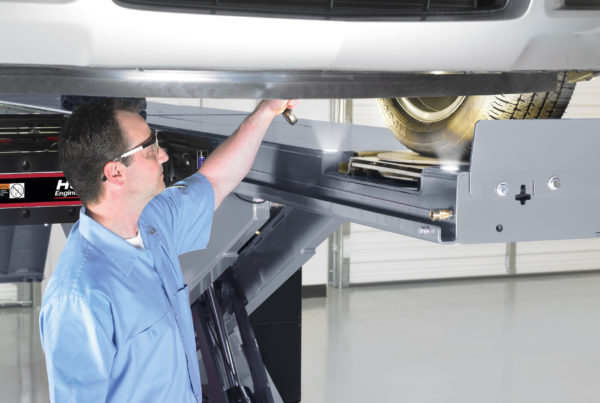For any car owner, proper wheel alignment is a must for keeping your vehicle in top shape. Caster, toe, and camber are key players in maintaining and preparing it for the rigours of the road. With this in mind, let’s break down what toe is and how it impacts the performance of your car.
What is the Meaning of Toe?
Toe in wheel alignment refers to the adjustment of the angle at which your vehicle’s tyres turn inward or outward when viewed from above. It is a crucial aspect of maintaining proper alignment for optimal vehicle performance.
In a toe-in alignment, the tyres are angled inward, resembling the way you angle your feet toward the centre of your body when standing. Conversely, a toe-out alignment involves angling the tyres outward. The measurement of toe, expressed in degrees and minutes, determines how much the front and/or rear wheels deviate from a straight-ahead position.
The purpose of toe alignment is to ensure that all four wheels roll parallel to each other. While toe-in provides increased stability by discouraging turning, certain types of vehicles may use toe-out to enhance turning ability.
As far as the practical adjustments are concerned, the adjustment of toe is relatively straightforward. It involves the use of a wheel aligner and wheel alignment lift to measure and adjust the distance between the front and rear edges of the rims on one axle.
Benefits of Good Toe Alignment
Proper toe alignment in a vehicle offers several benefits, including:
- Stability: Toe alignment, especially toe-in, provides increased stability by discouraging excessive turning. This is crucial for maintaining control and stability, especially during straight-line driving.
- Reduced Tyre Wear: Correct toe alignment helps in distributing the load evenly across all four tyres. This even distribution minimises tyre wear, ensuring that tyres wear out more uniformly and last longer.
- Improved Handling: Toe alignment influences how a vehicle responds to steering input. The right toe setting can enhance cornering ability and overall handling, providing a more responsive and controlled driving experience.
- Optimal Straight-Line Stability: A properly aligned toe ensures that the vehicle travels straight without pulling to one side. This contributes to a smoother and more predictable driving experience, especially on highways.
- Enhanced Fuel Efficiency: Improved alignment reduces rolling resistance, which can positively impact fuel efficiency. When tyres are properly aligned, the vehicle encounters less resistance on the road, leading to better fuel economy.
- Minimised Stress on Suspension Components: Correct toe alignment reduces stress on suspension components, including tie rods and wheel bearings. This, in turn, extends the life of these components and reduces the likelihood of premature wear and tear.
- Customisation for Performance: Depending on the type of vehicle and driving preferences, toe alignment can be adjusted to suit specific performance needs. For example, toe-out is often used in race cars to enhance turning ability.
What is the Difference between Toe, Caster and Camber?
Toe primarily deals with the direction in which the tyres point, whether inward (toe-in) or outward (toe-out) when viewed from above. Expressed in degrees and minutes, toe alignment influences tyre wear, stability, and the vehicle’s ability to turn smoothly. Toe-in provides increased stability, while toe-out is often used to enhance turning ability.
Camber focuses on the vertical tilt of the tyres when viewed from the front or rear. It is measured in degrees and indicates whether the top of the tyre leans inward (negative camber), outward (positive camber), or is perfectly vertical (zero camber). Camber affects tyre wear and the vehicle’s cornering ability, with negative camber commonly used to improve cornering performance.
Caster refers to the angle of the steering axis when viewed from the side. It is expressed in degrees and determines whether the steering axis is tilted backward (positive caster) or forward (negative caster). Caster influences steering stability and returnability, with positive caster enhancing straight-line stability and steering feel.
In essence, while toe deals with the direction of tyre alignment, camber addresses the tilt of the tyres, and caster focuses on the steering axis angle. These three alignment parameters work in harmony to ensure optimal tyre wear, stability, and overall vehicle handling.
How Often Should You Get Toe Alignment?
Check your vehicle’s toe alignment regularly, following your manufacturer’s recommended maintenance schedule, typically every 12,000 to 15,000 miles. Additionally, inspect toe alignment after significant events like hitting road hazards, during new tyre installations, or when symptoms of misalignment, such as uneven tyre wear or pulling to one side, become noticeable.
Explore Pro-Align’s Range of Wheel Aligners
Revolutionise your garage or service centre with top-tier vehicle servicing equipment from Pro-Align. We offer cutting-edge wheel alignment systems, such as the Hunter Elite TD, Hunter PA200 ACE and Hunter PA200 Plus. Reach out to us now for a seamless upgrade, and let our knowledgeable team assist you in transforming your operations to unmatched levels of excellence.





